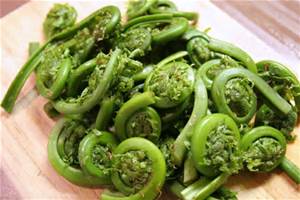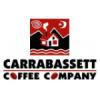Wild Edibles- What to Eat and Where to Forage in the Woods of Maine

We take local food seriously here at Maine Huts & Trails. It’s why we go out of our way to serve food that’s grown by local farmers; not only is it better for you and great for the local economy, it tastes great too. But what’s even better than locally farmed food? Food that you’ve foraged yourself, growing wild in the forests and meadows of the Maine mountains. Nourished by icy cold rivers and untouched soil, some of the best food around is growing right along our trails. Here’s a quick guide for what to eat, what to leave alone, and what to do with it when you get home:
Lambs Quarters:

This productive little plant tastes a lot like spinach, and is a powerhouse of nutritional density. Since it has more iron, protein, calcium, B1, and B2s than spinach or cabbage- packing some lambs quarters into your diet will make you feel awesome. It can even be considered a bit of a foraging ‘cheat’ since it can often be found in a garden alongside all the other weeds. They do grow in the wild, and are really pretty easy to spot. Wild Edible Plants of New England tells what to look for:
“The shape of its leaves and, especially, the talcum-powdered appearance of the young growing leaves gives it away. This mealy powder, most noticeable on the undersides of the leaves as the plant gets older, repels water, but disappears upon cooking. The leaves themselves are bluish-green, delicate to the touch. The stem is fleshy, tender when young. If crushed leaves smell like turpentine, you’ve found an inedible relative. Leave it alone.”
You can cook lambs quarters any way that you would spinach or chard- it’s a good steamable green that pairs well with garlic or lemon. Like all food you find in the wild, it’s important to cook it for at least a few minutes to kill off anything dangerous.
Dandelion Leaves:

You should have no trouble finding these guys, in fact your own lawn might be a great place to start, assuming you don’t use any chemicals. Dandelion leaves are best picked before the plant flowers, for optimal taste and nutrition. Packed with vitamins A and C, this bitter green pairs well with rich flavors- think bacon, goat cheese, or root vegetables. Again, wash well and cook down before serving.
Fiddleheads:

No list of edible Maine greens is complete without the classic fiddlehead. Many families have their own secret spot to find the best patch, but anyone can spot them if they know where to look. Fiddleheads are just young ferns, and they grow near streams in shady forests. Like anything you find in the wild, be sure you know exactly what you have before you eat it! Fiddleheads have some toxic twins, so it’s important to double or triple check, and cook well. Look for shiny, sturdy stalks with a brown, flaky outer layer. If you see white fuzz, keep looking- that’s just a regular old fern that tastes gross and could make you a little sick.
Fiddleheads are a quintessential Maine dish, so they’re really best paired with roasted baby potatoes and freshly caught fish or lobster. They’re easy to cook, and taste kind of like a gamey asparagus. Just steam or boil for about ten minutes, then toss with lots of high quality butter, vinegar, salt (truffle salt if you have it), and pepper.
This is a short list- there are a ton of edible wild foods in Maine… berries, acorns, seaweed, and leafy greens are everywhere if you know what to look for. Be overly cautious when foraging- never eat anything you’re unsure of, and cook it thoroughly. Also tread lightly; try to stay on the trail as much as possible, and never harvest more than half of a patch of any given plant. Most importantly, have fun! Even if you don’t find anything edible, there’s no better way to spend a summer afternoon.

























